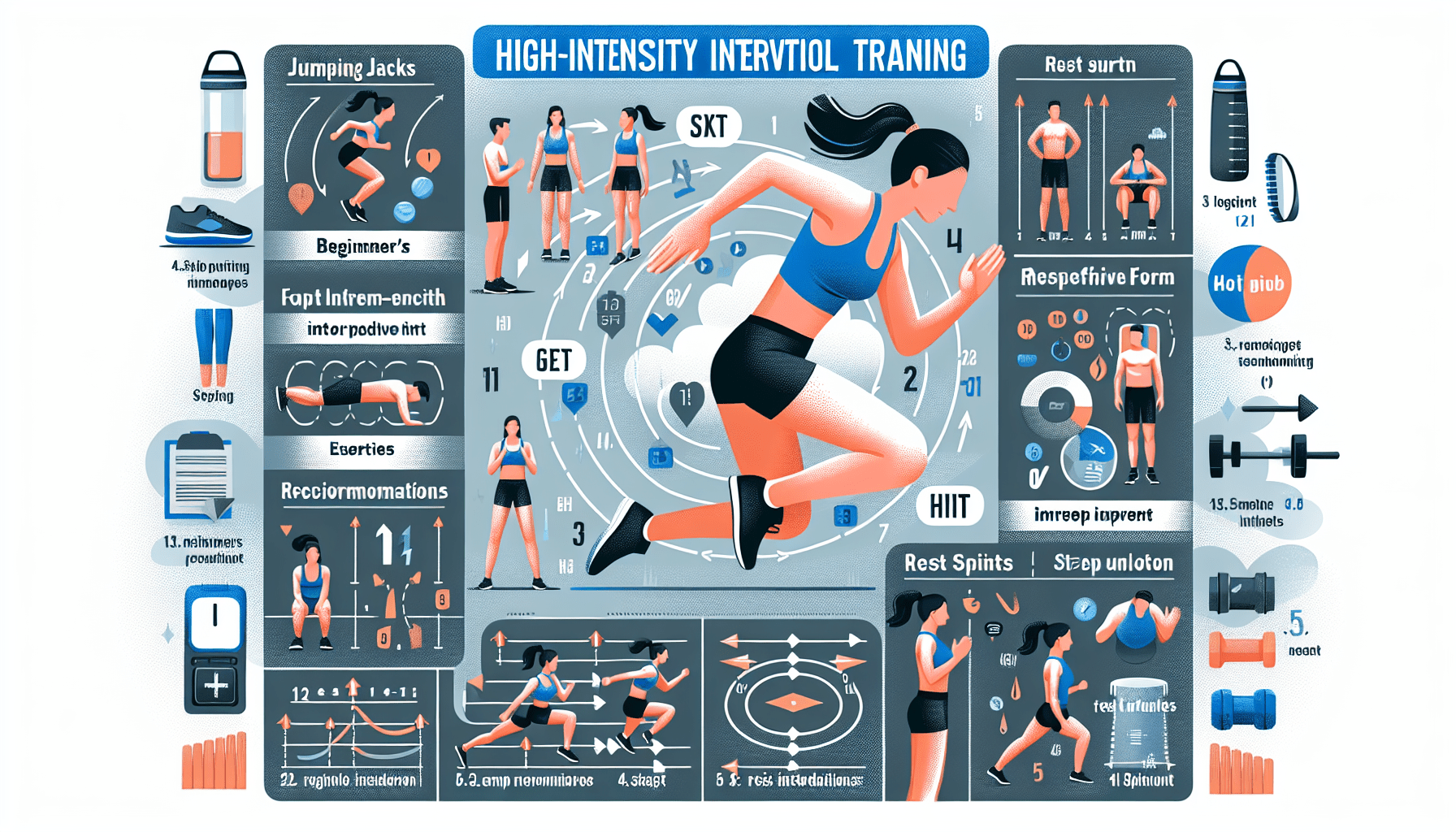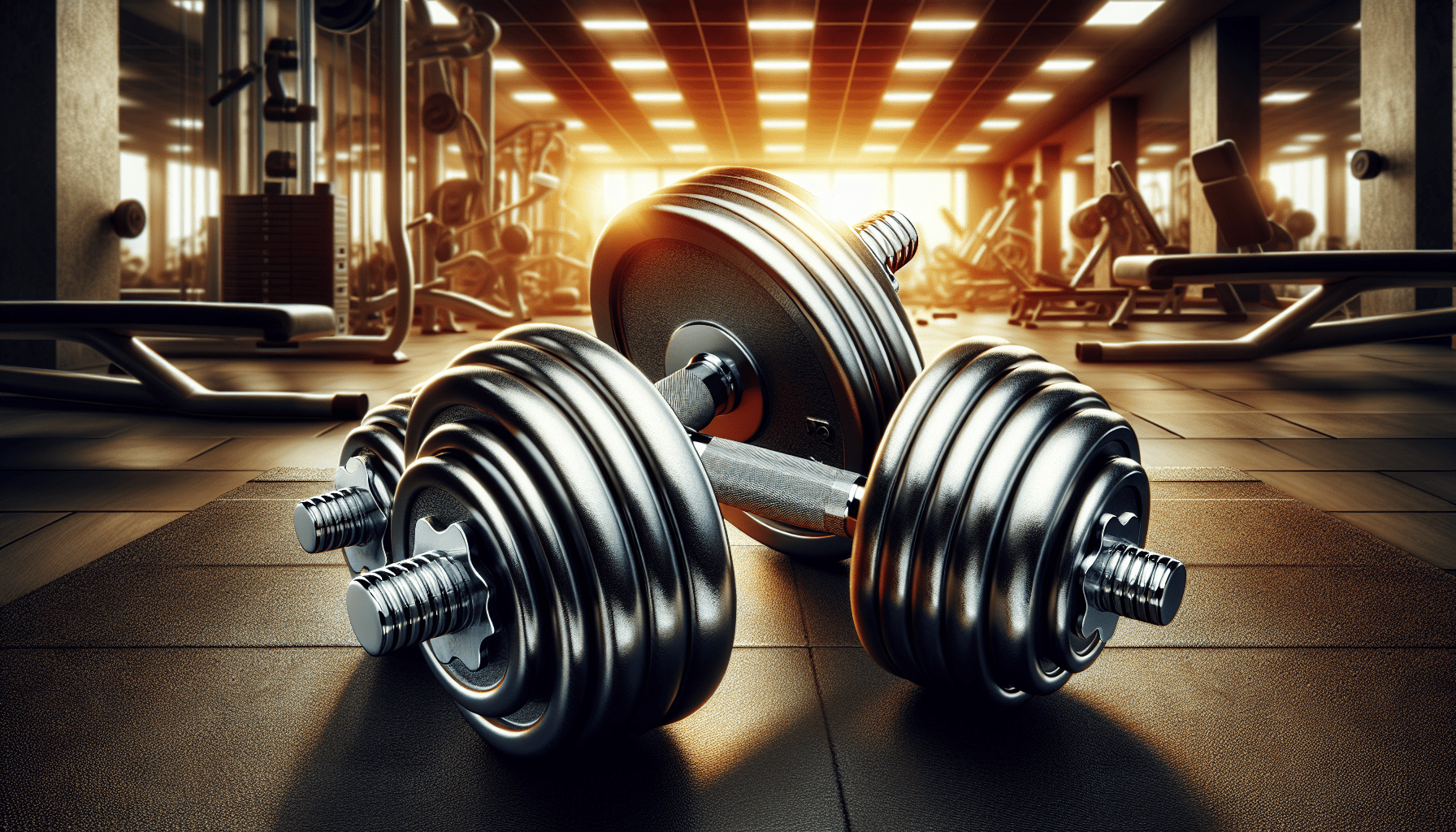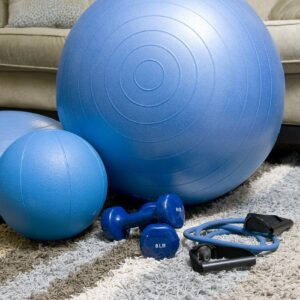Are you a beginner looking to start incorporating HIIT workouts into your fitness routine? Look no further! In this article, we will explore the world of HIIT workout plans specifically designed for beginners. With their high-intensity intervals and short bursts of intense exercise, these plans are perfect for those looking to rev up their metabolism and burn calories in no time. Get ready to challenge yourself and achieve your fitness goals with these witty and effective HIIT workout plans.
What is HIIT?
HIIT, which stands for High-Intensity Interval Training, is a type of exercise that involves alternating short bursts of intense activity with periods of rest or lower-intensity exercise. This training method has gained popularity in recent years due to its effectiveness in burning calories, improving cardiovascular fitness, and increasing overall endurance. HIIT workouts can be customized to fit individual fitness levels and can be done with or without equipment, making it suitable for beginners looking to incorporate a challenging yet efficient workout routine into their lives.
Explanation of HIIT
The concept behind HIIT is to push your body to its maximum capacity during the high-intensity intervals, followed by active recovery or rest periods to allow your heart rate to come down. This method challenges your cardiovascular system, forcing it to adapt to the rapid changes in intensity. The intense bursts of activity help to increase your metabolic rate, contributing to greater calorie burn even after your workout is complete. By continually challenging your body with high-intensity intervals, HIIT can help improve your stamina, endurance, and overall fitness level.
Benefits of HIIT
HIIT workouts offer a multitude of benefits, making them an excellent choice for beginners looking to kickstart their fitness journey. Firstly, HIIT is a time-efficient workout option, as it can be completed in a shorter amount of time compared to traditional cardio workouts. This is because the high-intensity intervals push your body to work harder, allowing you to achieve the same or greater results in a fraction of the time. Additionally, HIIT has been shown to improve cardiovascular health, increase aerobic and anaerobic fitness, boost metabolism, and aid in weight loss. Moreover, HIIT workouts can be easily modified to suit different fitness levels and can be done anywhere, making them accessible and convenient for beginners.

Why HIIT is suitable for beginners
HIIT is not exclusive to seasoned athletes or fitness enthusiasts. In fact, it is a great option for beginners who are just starting their fitness journey. One of the main reasons HIIT is suitable for beginners is its adaptability. Unlike some other forms of exercise, HIIT can be customized to fit your current fitness level. You have the freedom to choose the intensity and duration of the high-intensity intervals, allowing you to gradually build up your stamina and endurance over time. Additionally, HIIT workouts can be modified to accommodate any fitness limitations you may have, such as joint issues or previous injuries. The ability to tailor the workouts to your specific needs makes HIIT an excellent choice for beginners looking to challenge themselves and reach their fitness goals.
Getting Started with HIIT
Before diving headfirst into a HIIT workout routine, it is important to take a few necessary steps to ensure a safe and effective experience. Here are some essential steps to follow when getting started with HIIT:
Consult with a healthcare professional
Before embarking on any new exercise routine, it is crucial to consult with a healthcare professional, particularly if you have any pre-existing medical conditions or injuries. They can assess your current fitness level, provide personalized advice, and ensure that HIIT is suitable for you.
Choose appropriate exercise equipment
While HIIT can be done without any equipment, incorporating certain equipment can help enhance your workouts and add variety. Depending on your preference and accessibility, you can choose from options such as dumbbells, resistance bands, or even cardio machines like treadmills or rowing machines. Start with equipment that is appropriate for your fitness level and gradually progress as you become more comfortable and confident.
Warm up and cool down routines
Just like any form of exercise, warming up and cooling down is essential when participating in HIIT. Prior to your workout, spend at least 5-10 minutes engaging in dynamic stretches and light cardio exercises to prepare your muscles and increase your heart rate gradually. After your workout, take the time to stretch your muscles and allow your heart rate to return to normal. This helps prevent injuries and promotes proper recovery.
Sample HIIT Workout Plans
Once you have laid the groundwork for your HIIT journey, it’s time to jump into some sample workout plans that are suitable for beginners. These sample plans will provide you with a starting point, but feel free to modify and adjust them to fit your individual needs and preferences.
HIIT plan for beginners with no equipment
If you prefer to do HIIT workouts without any equipment, this sample plan is perfect for you. Remember, the key is to push yourself during the high-intensity intervals while allowing for proper rest or active recovery in between.
- Warm up – 5 minutes of jogging in place or jumping jacks
- High-intensity interval – 30 seconds of mountain climbers
- Active recovery – 30 seconds of marching in place
- High-intensity interval – 30 seconds of burpees
- Active recovery – 30 seconds of side-to-side lunges
- High-intensity interval – 30 seconds of high knees
- Active recovery – 30 seconds of marching in place
- High-intensity interval – 30 seconds of squat jumps
- Active recovery – 30 seconds of standing toe touches
- Repeat the sequence for a total of 3-4 rounds
- Cool down – 5 minutes of walking and static stretching
HIIT plan for beginners with dumbbells
If you have access to dumbbells or are looking to incorporate some resistance training into your HIIT routine, this sample plan is a great option.
- Warm up – 5 minutes of light jogging or jump rope
- High-intensity interval – 30 seconds of squat press (holding dumbbells at shoulder height, squat down and press the dumbbells overhead)
- Active recovery – 30 seconds of walking lunges
- High-intensity interval – 30 seconds of dumbbell thrusters (holding dumbbells at shoulder height, squat down and explode up, pressing the dumbbells overhead)
- Active recovery – 30 seconds of jumping jacks
- High-intensity interval – 30 seconds of renegade rows (in a plank position, alternate rowing each dumbbell to your side)
- Active recovery – 30 seconds of standing side leg lifts
- High-intensity interval – 30 seconds of bicep curls into shoulder press
- Active recovery – 30 seconds of standing toe touches
- Repeat the sequence for a total of 3-4 rounds
- Cool down – 5 minutes of walking and static stretching
HIIT plan for beginners with resistance bands
Resistance bands are another versatile and affordable option for incorporating resistance training into your HIIT workouts. Here’s a sample plan to get you started:
- Warm up – 5 minutes of jumping jacks or dynamic stretching
- High-intensity interval – 30 seconds of resistance band squats (place the band above your knees and squat down)
- Active recovery – 30 seconds of resistance band lateral walks (place the band around your ankles and walk sideways)
- High-intensity interval – 30 seconds of resistance band push-ups (place the band across your back and perform push-ups)
- Active recovery – 30 seconds of resistance band hamstring curls (place the band around your ankles and curl your heels towards your glutes)
- High-intensity interval – 30 seconds of resistance band rows (step on the band with one foot, hinge forward, and row the band towards your waist)
- Active recovery – 30 seconds of resistance band standing abductions (place the band above your knees and lift one leg out to the side)
- High-intensity interval – 30 seconds of resistance band tricep extensions
- Active recovery – 30 seconds of standing forward folds
- Repeat the sequence for a total of 3-4 rounds
- Cool down – 5 minutes of walking and static stretching

Exercises for HIIT
When it comes to HIIT workouts, there is a wide range of exercises to choose from. It’s important to select exercises that target different muscle groups and provide a mix of cardio, bodyweight, and strength training movements. Here are some exercise categories commonly incorporated into HIIT workouts:
High-intensity cardio exercises
High-intensity cardio exercises raise your heart rate and get your blood pumping. Some examples include sprinting, burpees, jumping jacks, mountain climbers, and high knees. These exercises help to improve cardiovascular fitness and burn a significant amount of calories in a short period of time.
Bodyweight exercises
Bodyweight exercises are great for HIIT as they require no equipment and can be done anywhere. Squats, lunges, push-ups, planks, and mountain climbers are all effective bodyweight exercises that target multiple muscle groups while increasing overall strength and endurance.
Strength training exercises
Incorporating strength training exercises into your HIIT routine helps build lean muscle mass and increases overall strength. Exercises like dumbbell curls, shoulder presses, kettlebell swings, and resistance band rows are great options for adding resistance and challenging your muscles during the high-intensity intervals.
Duration and Frequency
Now that you have an idea of the exercises you can include in your HIIT workouts, it’s important to understand the recommended duration and frequency for optimal results.
Recommended duration for HIIT workouts
HIIT workouts are typically shorter in duration compared to traditional cardio workouts. A typical HIIT session can last anywhere from 15 to 30 minutes, with the majority of the time spent in the high-intensity intervals. The key is to work at a maximum or near-maximum effort during these intervals to reap the benefits of HIIT.
Ideal frequency of HIIT sessions
When starting with HIIT, it’s important to listen to your body and gradually increase the frequency of your workouts. Beginners may start with 2-3 HIIT sessions per week, allowing for at least one day of rest in between workouts to give your body time to recover. As your fitness level improves, you can gradually increase the frequency to 3-4 sessions per week.
Allowing time for rest and recovery
Rest and recovery are just as important as the actual workouts themselves. While HIIT is a challenging form of exercise, it’s crucial to incorporate rest days into your routine to prevent overtraining and reduce the risk of injury. On your rest days, focus on light activities such as stretching, yoga, or low-intensity steady-state cardio to promote active recovery and give your muscles time to repair and grow.
Tips for a Successful Workout
To make the most out of your HIIT workouts and ensure a successful fitness journey, here are some valuable tips to keep in mind:
Listen to your body
Pay attention to how your body feels during and after each workout. If you experience any pain or discomfort, especially in your joints or muscles, it’s important to modify or stop the exercise. Push yourself, but also know your limits and prioritize safety.
Start slow and gradually increase intensity
As a beginner, it’s important not to jump into high-intensity intervals at full intensity immediately. Start with lower intensity intervals and gradually increase the intensity and duration as your fitness level improves. This gradual progression will help minimize the risk of injury and allow your body to adapt to the demands of HIIT.
Proper form and technique
Maintaining proper form and technique during your exercises is crucial for preventing injuries and maximizing the effectiveness of your workouts. Focus on executing each exercise with proper alignment, engage the appropriate muscles, and avoid any unnecessary strain on your joints. If you’re unsure about proper form, consider working with a certified fitness professional who can guide and correct your technique.
Modifications for Beginners
If you’re new to HIIT, it’s important to remember that everyone’s fitness journey is unique. Here are some modifications that can help beginners incorporate HIIT into their workouts comfortably:
Lower intensity options
If the high-intensity intervals feel too challenging, lower the intensity to a level that is manageable for you. You can decrease the speed, range of motion, or resistance of the exercises until you feel more comfortable. The goal is to gradually increase the intensity as you become fitter and more confident.
Reduced workout duration
If a full HIIT workout seems overwhelming, start with shorter durations and gradually increase the length over time. Aim for 10-15 minutes initially and gradually work your way up as you build stamina and endurance.
Incorporating intervals of active rest
Active rest intervals, such as marching in place or walking, can be included in your HIIT workouts to provide a momentary break before the next high-intensity interval. These intervals allow your heart rate to come down slightly while still keeping you engaged in the workout.
Monitoring Progress
Tracking your progress is a crucial aspect of any fitness journey. Here are some ways you can monitor your progress with HIIT workouts:
Recording workout details
Keep a workout journal or use a fitness app to track the exercises, duration, and intensity of each workout. This will allow you to see how your fitness level progresses over time and make adjustments to your routine as needed.
Tracking fitness milestones
Set specific fitness goals and track your progress towards achieving them. Whether it’s increasing the number of repetitions, improving your running speed, or increasing the weight you lift, celebrating these milestones can provide motivation and a sense of accomplishment.
Evaluating improvements and setting new goals
Regularly evaluate your progress and assess how your body is responding to the HIIT workouts. Take note of any improvements in endurance, strength, or flexibility. Based on your evaluations, set new goals to continuously challenge yourself and keep your workouts engaging and rewarding.
Importance of Recovery and Rest
While the intensity of HIIT workouts is undoubtedly beneficial, it’s equally important to prioritize recovery and rest. Here’s why rest is crucial in a successful HIIT routine:
Understanding the role of recovery
During recovery, your body repairs and rebuilds the muscles that were broken down during exercise. Giving your body enough time to recover allows for muscle repair, reducing the risk of overuse injuries and maximizing the benefits of your workouts.
Recovering between sets
In addition to rest days, allow for sufficient recovery time between sets during your workouts. This will ensure that you can maintain proper form and technique throughout the entire workout, reducing the risk of fatigue-related injuries.
Allowing time for muscle repair and growth
HIIT workouts place a significant demand on your muscles, breaking down muscle fibers in the process. It’s during the recovery phase that your muscles rebuild and grow stronger. Adequate rest and recovery time allows this process to occur, helping you achieve your fitness goals more effectively.
Alternatives to HIIT for Beginners
While HIIT can be a fantastic workout option for beginners, it may not be suitable for everyone. Here are some alternative workouts that beginners can consider:
Low-intensity steady state (LISS) cardio
LISS cardio involves engaging in low-to-moderate intensity cardiovascular exercises for an extended period of time, typically 30 minutes or more. This can include activities like brisk walking, cycling, swimming, or using the elliptical machine. LISS cardio provides a lower impact alternative to HIIT and is a great way to improve cardiovascular health while gradually building up stamina.
Circuit training
Circuit training involves a series of exercises performed one after the other, often targeting different muscle groups. This allows you to have short periods of rest in between exercises. Circuit training combines both strength training and cardiovascular exercises into one efficient workout, making it a great alternative to HIIT for beginners.
Group fitness classes
Joining a group fitness class, such as Zumba, spinning, or aerobics, can be an enjoyable alternative to HIIT workouts. These classes are typically led by certified instructors who provide guidance, motivation, and a structured workout plan. Group fitness classes offer a social and supportive environment, which can be beneficial for beginners looking to enhance their fitness journey.
In conclusion, HIIT workouts provide a challenging yet efficient way for beginners to improve cardiovascular fitness, burn calories, and increase overall endurance. By following the steps to get started, incorporating appropriate exercises, and monitoring progress, beginners can safely and effectively embark on their HIIT journey. Remember to listen to your body, start slow, and prioritize rest and recovery, as these elements are crucial for a successful and sustainable fitness routine. If HIIT doesn’t suit your needs or preferences, there are alternative workout options available that can still help you achieve your fitness goals. The most important thing is to find a workout routine that you enjoy and that works for you, so you can stay consistent and reap the many benefits of regular exercise.




